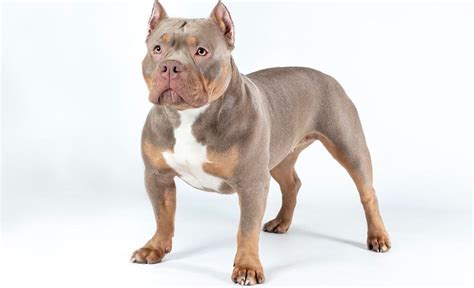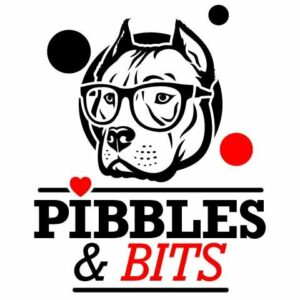
Have you ever seen a stunning dog sporting a unique combination of colors on its coat and wondered what breed it is? Say hello to the tri color bullies! These dogs are known for their distinct coat patterns and endearing personalities, making them a popular choice among dog enthusiasts. In this article, we will cover various aspects of the breed and provide you with all the information you need to know about these fascinating canines.
Tri Color Bullies: An Overview
Tri color bullies are a type of American Bully, which is a combination of the American Pit Bull Terrier and the American Staffordshire Terrier breeds. They are medium-sized, muscular, and robust dogs, with a short coat that comes in a variety of striking tri-color patterns. The term “tri-color” refers to the presence of three distinct colors on the dog’s coat, often black, white, and tan. Recognized by the United Kennel Club (UKC) and the American Bully Kennel Club (ABKC), these dogs are bred for their distinct appearance and sociable temperament.
Although they might seem intimidating at first glance due to their muscular build, tri color bullies are known for being incredibly friendly, loving, and good-natured. They make excellent family pets, are great with children, and get along well with other dogs if socialized properly from a young age. The popularity of tri color bullies continues to grow, as more and more people are drawn to their unique looks and affable personalities.
Tri-Color Bullies: Breed History and Lineage
The history of tri-color bullies can be traced back to the early development of the American Bully breed in the late 20th century. At that time, breeders began selectively breeding American Pit Bull Terriers and American Staffordshire Terriers to create a dog with a distinct appearance and more docile temperament. The tri-color pattern emerged through careful breeding and the introduction of other breeds into the gene pool, such as the English Bulldog and Olde English Bulldogge, which contributed to the tri-color genetics.
In the earlier years of the breed’s development, the tri-color pattern was considered a fault and was not accepted in dog shows. However, in 2011 the ABKC decided to recognize tri-color bullies as a standard variation of the American Bully breed. This change in recognition allowed tri color bullies to gain popularity, and they are now sought out by dog enthusiasts around the world for their wonderfully unique coat patterns and friendly nature.
Tri Color Bullies: Physical Characteristics and Coat Colors
The most defining physical characteristic of tri color bullies is their coat color, which consists of three distinct shades. Common tri-color combinations include black, white, and tan; blue, white, and tan; or chocolate, white, and tan. Other variations, such as a merle pattern, may also be seen. This tricolor pattern is the result of a gene that causes the dog to produce three separate colors in their coat, with one color usually dominating, one as a secondary color, and the third appearing as markings or “points” on the dog’s body.
Aside from their distinctive coat colors, tri color bullies are also known for their muscular build and strong, athletic appearance. They typically have a wide chest, thick neck, and a square, blocky head. Due to their athletic frame and high energy levels, these dogs require regular exercise and outdoor activities. The size of an adult tri color bully can vary from 17 to 21 inches in height and weigh anywhere between 40 to 60 pounds, with males being larger than females.
Tricolor American Bully: Temperament and Personality
Although tri color bullies may appear intimidating due to their muscular build, they are actually very affectionate and friendly dogs. They are known for their loyalty, intelligence, and eagerness to please their owners. With proper socialization from a young age, these dogs can be great with children and other pets in the household. It is important to remember that each dog is an individual and that temperament can be influenced by factors such as genetics, upbringing, and training.
Despite their strong appearance, tri color bullies are not guard dogs and should not be relied upon to perform such tasks. They are naturally sociable animals and are more likely to welcome a stranger than to perceive them as a threat. When it comes to training, these dogs respond best to positive reinforcement and enjoy activities that challenge their bodies and minds. Due to their high energy levels, they require regular exercise and mental stimulation to prevent boredom and destructive behavior.
Tri-Color Bullies: Health and Care Considerations
Like all dog breeds, tri color bullies may be susceptible to certain health issues. Some common health concerns in this breed include hip and elbow dysplasia, heart diseases, allergies, and skin irritations. However, with regular check-ups, a balanced diet, and proper exercise, many of these health issues can be managed or prevented. It’s essential to work with a reputable breeder to ensure you are getting a healthy puppy with a good genetic background.
When it comes to grooming, tri color bullies have a short, low-maintenance coat that requires minimal upkeep. An occasional bath and regular brushing are sufficient to keep their coat looking clean and healthy. Other routine care tasks include regular dental check-ups, ear cleaning, and nail trimming. By addressing these basic care needs, you can ensure your tri color bully enjoys a long, healthy, and happy life with your family.

To summarize, tri color bullies are a unique and fascinating type of American Bully, known for their striking three-colored coat patterns and friendly personalities. Some key points about this breed are:
- Tri color bullies are medium-sized, muscular dogs, resulting from a combination of the American Pit Bull Terrier and American Staffordshire Terrier breeds, and sometimes influenced by the English Bulldog and Olde English Bulldogge.
- These dogs are recognized by the United Kennel Club (UKC) and the American Bully Kennel Club (ABKC), and known for their sociable temperament, making them excellent family pets and great with children if socialized properly.
- Tri color bullies have distinct coat patterns, with common combinations including black, white, and tan; blue, white, and tan; or chocolate, white, and tan.
- Although they may seem intimidating due to their strong appearance, they are not guard dogs and are instead known for their friendliness, loyalty, and intelligence.
- Some potential health issues for this breed include hip and elbow dysplasia, heart diseases, allergies, and skin irritations, but regular check-ups, a balanced diet, and proper exercise can help manage or prevent these concerns.
- Grooming requirements for tri color bullies are minimal due to their short, low-maintenance coat.
By understanding these key aspects of tri color bullies, you can ensure a happy, healthy life with these unique and loving companions.
